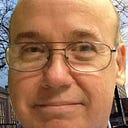The Use of Jazz in Movie Scores: Some Thoughts for Retro Spectrum Radio
I saw Jaws in 1975 at the Bedford Mall theater that was on the left when you walked in. (I’d see Taxi Driver a year later). With the big screen and the great sound system, it was awesome. I’ll always remember the opening with John Williams’ score on soundtrack.
I saw Star Wars across the aisle at the Bedford Mall theaters in 1977, but that’s a story in itself! It was so packed, my friend Gary Hamer and I had to sit down front, right in front of the screen, which was uncomfortable, to say the least. During the movie, we realized from the commotion in back of us there was row upon row of mentally disabled kids there, right in back of us. They certainly enjoyed the show, and actively participated before The Rocky Horror Picture Show legitimated audience participation with what was on the screen.
I saw movies generally in the company of Gary Hamer after my older brother and I parted company in adolescence.
Bernard Herrmann’s “Taxi Driver” Score
Before we saw Taxi Driver, Hamer told me his father and mother went to see it, their first outing to a movie theater since 1969, when they had seen John Wayne in The Hell Fighters. Gary’s father had been shocked. I guess his mother had been struck mute.
I can only describe what seen Robert DeNiro and Harvey Keitel for the first time as shocking. They seemed absolutely real, as if this were a documentary, not a theatrical. They seemed as disgustingly low life ast he characters they played in the picture. (DeNiro had already won his first Oscar for Godfather II, but I hadn’t seen it.)
Later, I thought to myself that my reaction to them must have been akin to how audiences reacted to their first site of Brando, in Streetcar Named Desire. Elia Kazan had used Alex North to compose the jazz influenced soundtrack, and the soundtrack was censored along with the movie, as the Catholic censors found both images and music salacious.
It wasn’t until decades later I realized that the score of Taxi Driver was composed by Bernard Herrmann, and it was his last. He had scored Citizen Kane, but was best know for his soundtracks to Alfred Hitchcock movies, notably Vertigo, North by Northwest — and most notably — Psycho (which still played drive-ins up until the time I entered West High School in 1973).
All three are among the greatest scores in movie history. Herrmann’s score for Taxi Driver was to be his last.
Hermann was of the classical music orchestration school, as was John Williams. We aren’t talking Stanley Kubrick using classic pieces of music as the soundtracks of 2001: A Space Odyssey or A Clockwork Orange, but works influenced by the great composers.
Kubrick’s soundtrack for 2001 was the temporary music he used until Alex North’s score was ready. Upon receiving it, he rejected North’s work and made his temporary soundtrack permanent. It was a watershed in movie music, and Kubrick used “found” music again in A Clockwork Orange, mixed with Walter (Wendy) Carlos score, which re-orchestrated Beethoven and Purcell with a synthesizer.
Jazz on Soundtracks
I next saw DeNiro in Martin Scorcese’s New York, New York — this time accompanied by a West High school sophomore, Debbie (I was a senior). It ch featured a jazz score, naturally, as it was about the post-war era of mainstream white jazz. It was heavily touted on the TV, due to Liza Minelli (whose appeal — based on her musical abilities, as she wsa inferior to Barbara Streisand not only in voice and material but in looks and acting ability — never pealed my bells).
I bring this up, as when I was a kid until I was a cineaste at Boston University, movie scores were either orchestral, or jazz. The jazz scores of movies irritated me as, by 1980, jazz as a mainstream art was dead. Although I was intrigued by the Billie Holliday album The Lady in Satin at college (the actual L.P. was so worn out that it hurt one’s enjoyment), I didn’t grow to love bop and cool jazz and Miles Davis and John Coltrane until after I was in the Army, but the mainstream movies I talk about weren’t score by those two geniuses.
One movie that used a jazz was scored by a genius: Duke Ellington’s soundtrack for Otto Preminger’s Anatomy of a Murder was a milestone in movie soundtracks, but that was in 1959, the year I was born.
Jazz scores were everywhere on movie soundtracks in 1980, and were used even in situations that were inappropriate.
A movie taking place in New Orleans yes, but every other detective movie or thriller seemed to have a jazz score. Jazz was so dead, that it was not unobtrusive. as background. It was a anachorism. Composed by men born in an era where jazz was alive and vital — men of the generations that came of age between the two world wars, like Jack Kerouac, whose novels that I started reading at college 10 years after his death in 1969 seemed dated when he talked about jazz — jazz had been part of the everyday world, like rock music was to the Baby Boom generation.
It was the pop music of its day. But unlike rock, jazz hadn’t remained a popular art form.
If there was one person who changed the use of music in American film, it was Martin Scorsese, to whom my introduction was two films — ironically, that used an orchestral score and a jazz. But it was his use of pop music on a movie soundtrack that was revolutionary.
